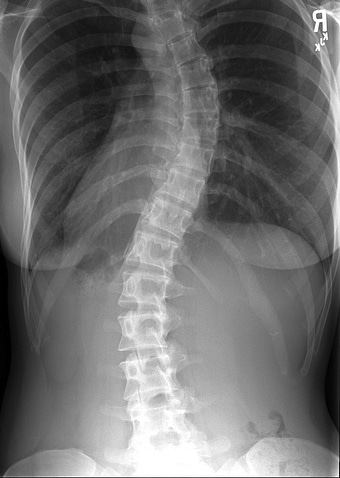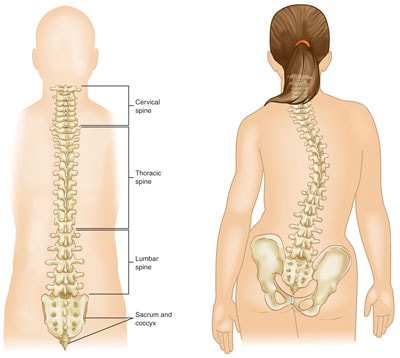What is scoliosis?
Mention the word Scoliosis and for most of us it summons up images of painfully distorted posture, rigid back braces, and the worse case scenario of surgical bracing with metal rods and hardware. Most of us probably remember being checked for Scoliosis as children during a school screening or during a regular physical exam.
Doctor’s most commonly make a diagnosis of Scoliosis via Adams Test (visual examination of the spine while the patient bends forward) and measurement of the Cobb angle on spinal X-Rays. Scoliosis is diagnosed when an abnormal lateral (sideways) curvature of the spine is present and greater than ten degrees (Cobb angle X-ray measurement). The impact of Scoliosis ranges from asymptomatic mild postural changes in the curves of our spine to more symptomatic and painfully stressed curvatures. Severe Scoliosis may lead to medical complications and sometimes requires bracing and surgical interventions.
How does Scoliosis happen?
The most common diagnostic categories of Scoliosis are idiopathic vs. congenital. An idiopathic origin implies that the cause is not readily identifiable or explainable while congenital causes typically originate with a malformed bone or vertebra of the spinal column. While Scoliosis does appear to run in families it is not considered a genetic disorder. A third type of Scoliosis is referred to as Neuromuscular and is believed to develop as a secondary symptom to some specific neurological diseases. Scoliosis is also often categorized chronologically as infantile, juvenile, adolescent, and adult based upon the time of diagnosis.
How do you fix Scoliosis?
Unfortunately there is not a known “cure” for Scoliosis. Traditionally treatment based on the medical model has focused on observational management (wait and see) for worsening of measured curvatures and prescribed bracing and surgery for management with mixed results at best.
Physical Therapy and Chiropractic have traditionally offered manipulation and corrective exercise based care plans that focus on maintaining spinal mobility and core muscle strength in order to slow down progression and relieve symptoms.
It is important to note that the traditional measurement of Scoliosis through the Cobb angle is a two dimensional measurement of the angle of one vertebra to another. The spinal column functions three dimensionally and therefore many practitioners believe that traditional methods of treatment based on a two dimensional measurement are inherently limited. That being said, many patients report symptomatic relief and improved posture from Physical Therapy and Chiropractic treatment models.
The Pettibon Technique and Chiropractic Biophysics are two specialized forms of care that have demonstrated success in reducing/normalizing scoliotic curvatures and demonstrate objective improvement via pre and post treatment x-ray measurement of abnormal curvatures.
The CLEAR Institute is a more recent group of practitioners that are emphasizing a three dimensional treatment approach to treatment of Scoliosis utilizing Physical Therapy and Chiropractic techniques in a structured and labor intensive approach.
Where should you start if you suspect you or a family member is developing Scoliosis?
The best place to start is with an evaluation from a Doctor of Physical Therapy or Chiropractic. A physical exam and Scoliosis series X-Rays (if clinically indicated) will provide the foundation for a proper diagnosis and treatment plan. If indicated the practitioner can subsequently refer you to the appropriate specialist.
Can you prevent Scoliosis?
This is a challenging question to answer due to the complex and difficult to identify causes of many cases of Scoliosis. The most proactive approach to prevention is to obtain a thorough evaluation and begin a course of conservative care if development of Scoliosis is suspected.
Physiologic NYC, Contact us today to schedule your appointment and take the first step toward a healthier


